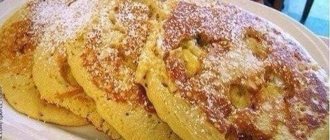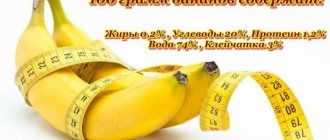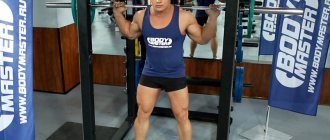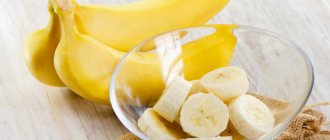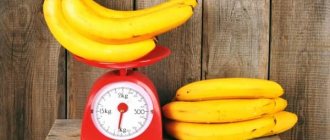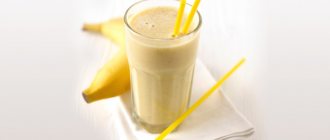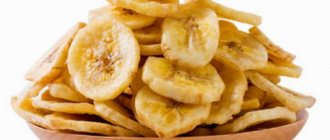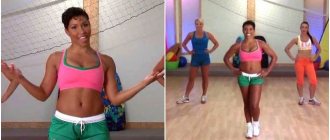If you eat them correctly.
Bananas are the main sports fruit. During two weeks of the Wimbledon tournament, tennis players consume up to 5 tons of bananas (5 pieces per day). Bananas have been popular among cyclists since the 1980s, when the Raleigh Banana team promoted the fruit through its name, bike uniforms and bike design. Bananas are loved by football players and runners - they are easy to open on the go and provide a quick refreshment. And fans - but it’s better to eat bananas than to use them for other purposes.
How to eat bananas for sports performance benefits
The biggest “banana” enthusiast is American professor David Nieman from Appalachian State University. Since at least 2012, it has been studying how eating bananas affects the health of cyclists.
In one early study, Niemann looked for the ideal snack for cyclists—one that would both reduce overtraining-related muscle inflammation and help maintain performance during exercise. His choice fell on bananas - because they have a lot of potassium and vitamin B6, but also have enough carbohydrates.
A team of researchers led by Nieman gathered 14 male cyclists aged 18-45, divided them into two groups and sent them on a 75 km ride. The first group ate a banana before the race, and the second drank an energy drink with the same carbohydrate content. In the next race, they switched places - now the second group ate bananas, and the first drank a drink. After each race, blood tests were taken from all participants and it was found that bananas maintained strength no worse than sports drinks.
In 2021, Nieman conducted a similar study in a slightly different setting, and was able to prove that bananas were even better than sugary drinks because they were better at protecting against inflammation, maintaining strength longer, and facilitating post-workout recovery. In 2021, another group of researchers published preliminary work showing that bananas can not only maintain strength, but also increase physical strength in athletes - although this will require eating two ripe bananas in the morning and evening for a month.
Thanks to all this work, cyclists have become friends with bananas - they try to include them in breakfast and take them with them on long rides. However, it's not just cyclists who love bananas. The British Ministry of Health (NHS) recommends that all athletes, an hour before training, have a light carbohydrate snack - with whole grain bread, porridge or the same banana. The same goes for a workout that takes longer than an hour - your body will appreciate it if you take a break and eat a banana.
True, you shouldn’t exaggerate the effect of bananas. Although bananas contain a lot of potassium, if you eat the fruit, its level in the blood does not rise very much and quite smoothly - in about half an hour to an hour. Therefore, bananas will not be able to relieve you from muscle cramps associated with physical activity.
Is it possible to eat bananas before training?
On the question: is a banana useful before a workout, the opinions of experts are divided.
According to some, after eating the fruit, sugar levels rise sharply, insulin production increases, and energy and vigor appear. The negative point is the short duration of the effect. As a rule, the energy effect from eaten fruit lasts no more than half an hour. During physical activity, a person feels tired, the body needs a new portion of carbohydrates, for which it is necessary to make a “window” during exercise for a short snack.
Proponents of the “banana diet” claim that eating a banana before training is a must. While satisfying the feeling of hunger, they do not eliminate the stomach overload inherent in standard meals, and also provide energy replenishment that promotes activity during exercise.
In any case, one fruit eaten 30 minutes before the start of sports activities eliminates negative consequences.
What's good about bananas? Vitamins, potassium, fiber and carbohydrates.
Dessert bananas are very similar in nutritional content, so much so that international food databases (like USDA) often don't even list the variety. That is, there is a difference, but no more than a calorie or two, or a fraction of a gram. Therefore, it does not matter which variety of bananas you choose - they will contain approximately the same amount of nutrients. Let's see which ones exactly.
Potassium. Per 100 g (this is slightly less than the weight of one average banana in its peel) there are 358 mg of potassium. According to Russian standards, adults need to receive 2500 mg every day, so this is 14% of the daily value. Getting enough potassium is not only important, but very important because without it, not a single cell in the body can function. Potassium is necessary for the normal regulation of the heartbeat and the proper functioning of muscles and nerves - and without it, protein synthesis and energy production are impossible. So it becomes clear why sports doctors have been eyeing bananas for a long time.
B vitamins: These are eight water-soluble vitamins, of which bananas contain five. But it is especially important for us that 100 g of bananas contain approximately 0.4 mg of vitamin B6. According to Russian standards, adults need 2 mg per day, so bananas contain 20% of the daily value. Vitamin B6 ensures the functioning of many enzymes - proteins that “accelerate” chemical reactions, some of which regulate cell division. So it is important for everyone to get this vitamin with food - but it is especially useful for athletes during weight gain.
Dietary fiber. 100 g of bananas contain 2.6 g of fiber. According to Russian standards, adults need 20 g per day, that is, bananas contain 13% of the daily value. We talked in detail about the beauty of fiber in the article “Is it harmful for athletes to eat bread?”
Carbohydrates. There are 22.8 g of carbohydrates per 100 g of bananas. It's a lot. But it is important to understand that not all of these carbohydrates are sugars. About half is resistant, that is, starch that is not digestible in the intestines. Resistant starch has no benefit in the form of energy, nor harm in the form of extra pounds. It's just a neutral filler that gives the banana volume. It can be absorbed only if this starch is boiled or fried - this is the idea of culinary bananas (and potatoes - the same story with them and their starch).
The role of banana for an athlete
Eating two fruits before a workout will help keep your blood sugar levels in line and release extra energy. One banana after training allows you to replenish potassium reserves, vitamin C will strengthen tendons and ligaments, and also synthesize the necessary amount of adrenaline for new achievements.
In order for bananas to be as beneficial as possible, it is better to eat them 40-50 minutes before training, and as soon as possible after. Mixed with milk, the fruit becomes a nutritious protein shake. You can add honey, mango, orange, yogurt to it. Depending on the composition, such a cocktail will have different effects on the body, relaxing or toning it.
You need to buy bananas in a slightly unripe form; in a dry, dark place they will acquire a beautiful and uniform yellow tint, aroma and excellent taste.
Bananas ripen in the store and release ethylene gas. The yellower the banana, the sweeter and more harmful it is.
We must immediately make a reservation - the nutritional value of a banana greatly depends on its ripeness. The Russian GOST talks in some detail about how green bananas ripen.
Bananas are picked at the age of 11-12 weeks - that is, when the fruits are already fully formed, but still remain green and hard. They are hard because most of the pulp is resistant starch. While the bananas are traveling in the hold of the ship, they do not ripen, because it is cool in the hold, and the bananas themselves are packaged in boxes and large bags. This is important because when the bananas are unloaded into the warehouse in the store, in the heat they will begin to more actively release ethylene gas. This gas plays the role of a hormone in bananas, which helps them ripen faster.
From a chemist's perspective, ripening is the process of converting resistant starch into easily digestible sugars. In ripe bananas, the total sugar content can reach 16% of the total weight. This means that the glycemic index of ripening bananas gradually increases.
The glycemic index is a rating of foods on a scale from 0 to 100 that shows how quickly these foods raise blood glucose levels. The more glucose there is in a product, the sooner glucose enters the bloodstream - and the higher the glycemic index of the product.
And the more glucose in the blood, the more pancreatic cells will release insulin, a hormone that takes glucose from the blood and transports it into the cells. If a lot of insulin is released at once, the blood glucose level drops sharply, and the brain turns on the feeling of hunger in a panic. As a result, a person who has eaten foods with a high glycemic index will soon want to eat again - even if he actually has more than enough calories.
Unripe green bananas contain little glucose and a lot of starch - so the glycemic index of such bananas is about 30. This is low. But as the banana ripens (that is, turns yellow), the content of easily digestible carbohydrates increases. At the moment when the banana becomes beautiful, fragrant and completely yellow, its glycemic index will increase to 51-58, that is, it will almost double. And this is already quite a lot. This is why people with type 2 diabetes are advised to limit the amount of bananas they eat and not eat them every day.
Thus, ripe—and especially overripe, soft, brown-skinned bananas—stimulate your appetite. So it’s safer to limit yourself to one, maximum two bananas a day - otherwise there is a chance of overeating.
Myths about bananas
There are several misconceptions about this fruit that force novice athletes to make the wrong decisions: they either start consuming bananas in unlimited quantities or abandon them completely. Myths about fruits look like this:
- Bananas can cure every disease thanks to a record amount of vitamins and macroelements. This is an incorrect statement, despite its usefulness, it is the most common fruit that should not be endowed with supernatural powers.
- Bananas make you feel better. Confirmation of this fact has been found only partially; if you consume up to 10 pieces per day, then the risk of gaining weight really exists, and 1-2 fruits will only bring benefits.
- The natural sugar contained in the product can cause tooth decay. Much depends on the environment in which the bananas were ripened. If they entered the country green (and this often happens) and were brought to a yellow state in a gas chamber, then the benefits of the fruit may be questionable. The best way out is to buy green bananas and wait at home for them to ripen. This prevents the breakdown of carbohydrates into simple sugars. It is also important to maintain personal hygiene (brushing your teeth and rinsing your mouth) so that your teeth always remain healthy, and their condition does not depend on the quantity and quality of fruit consumed.
How to replace bananas if you don't like them
Potassium, vitamins B6 and carbohydrates are not only found in bananas. Even a banana fanatic like Nieman showed in 2015 that pears are almost as good for maintaining strength as bananas (although bananas do work a little better).
In general, athletes can get potassium, carbohydrates and B vitamins not only from bananas, but also from other fruits and vegetables (including dried fruits), whole grain cereals and bread. The only major advantage of bananas over these products is that it is convenient to take with you - and at the same time it contains everything you need for a successful workout.
Can you eat bananas while working out?
A short break with a snack during training will not worsen the results at all if the food is a banana. A small injection of adrenaline in the form of “fast carbohydrates” will have a beneficial effect on activity and increase tone. The main condition is not to overdo it.
If activities that require significant strength exertion last no more than 45 minutes, “lunch” is limited to 1/3 of the fruit. For an hour-long workout, the dose is increased to half the fruit, divided into two parts and taken at twenty to thirty minute intervals.
